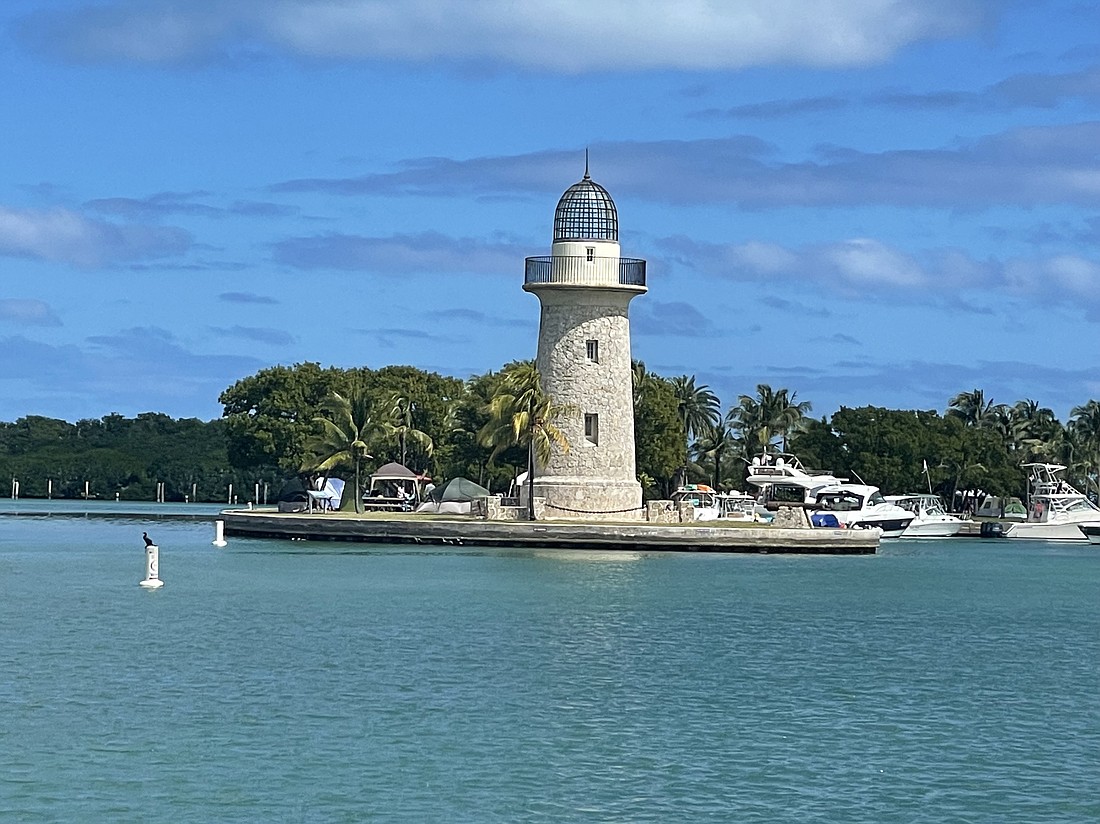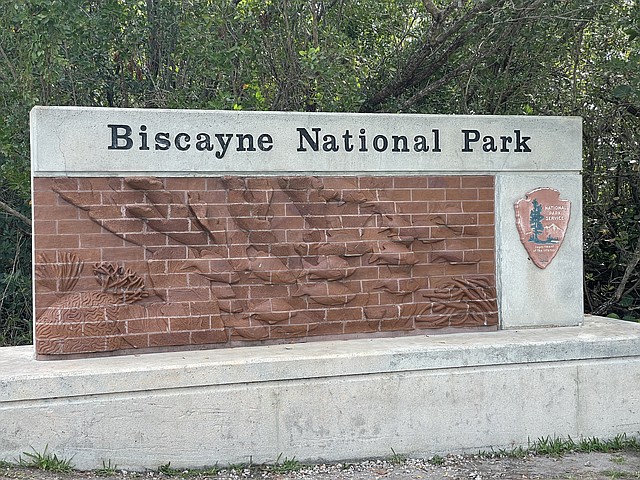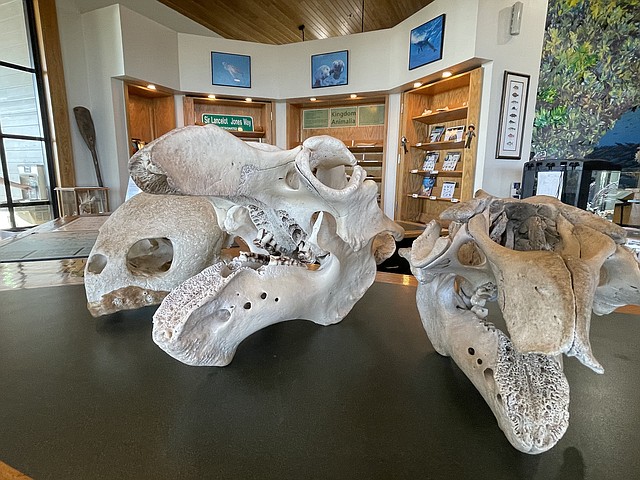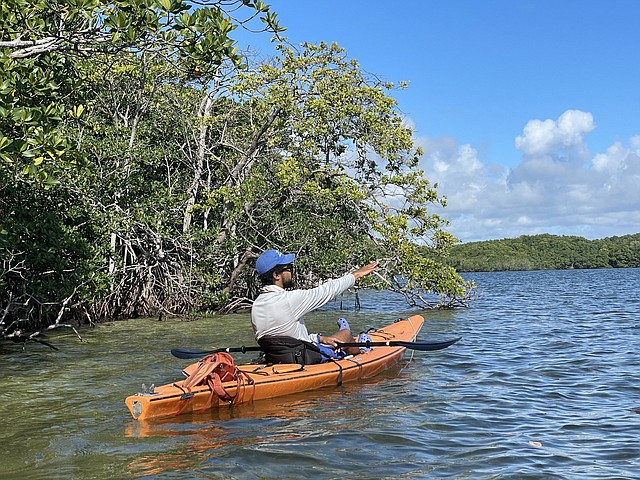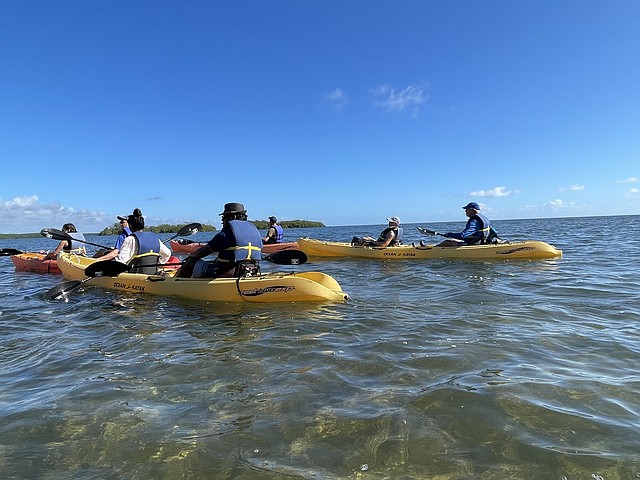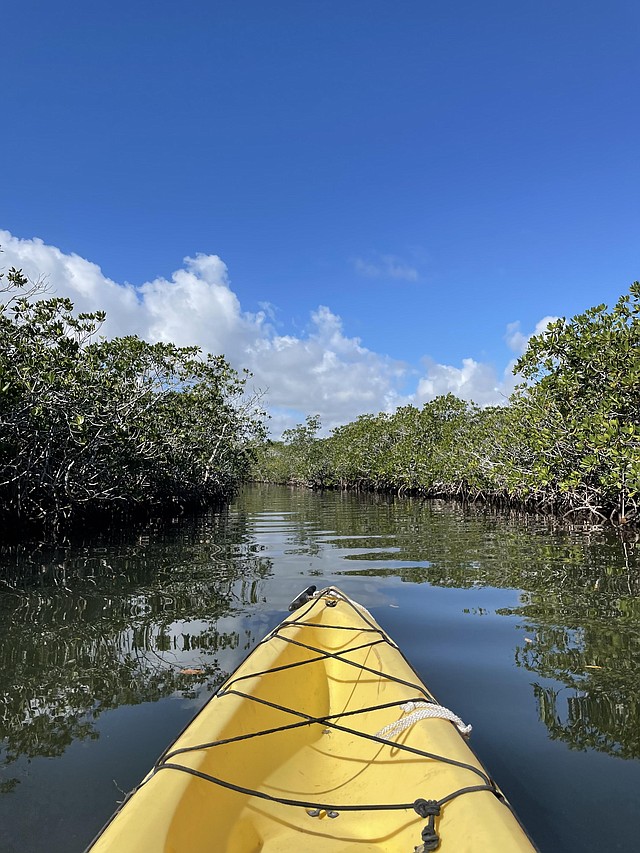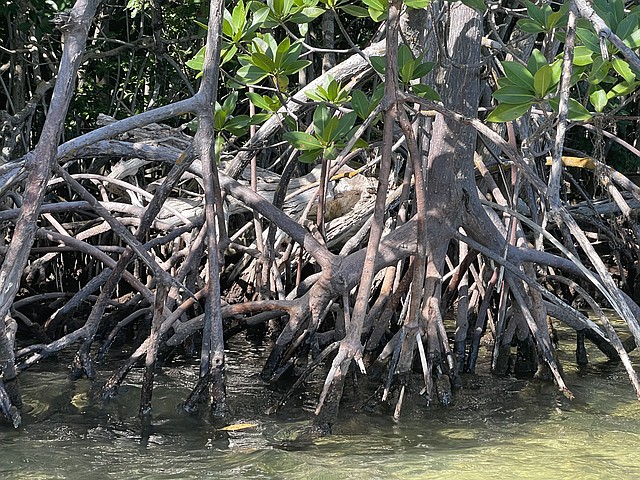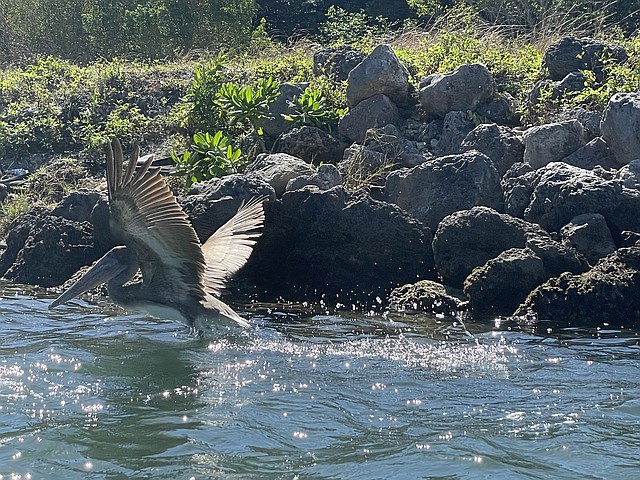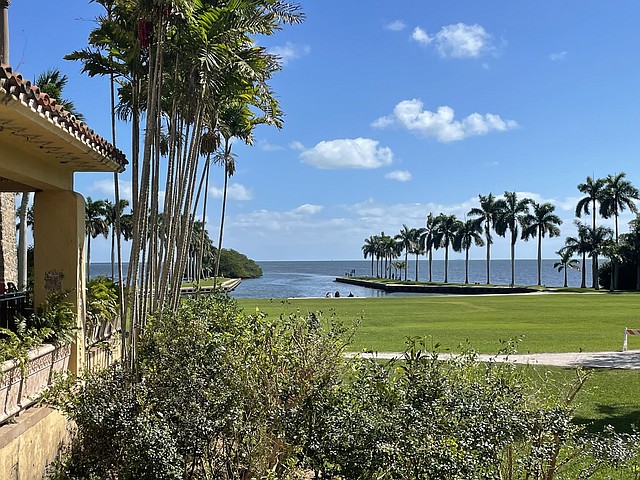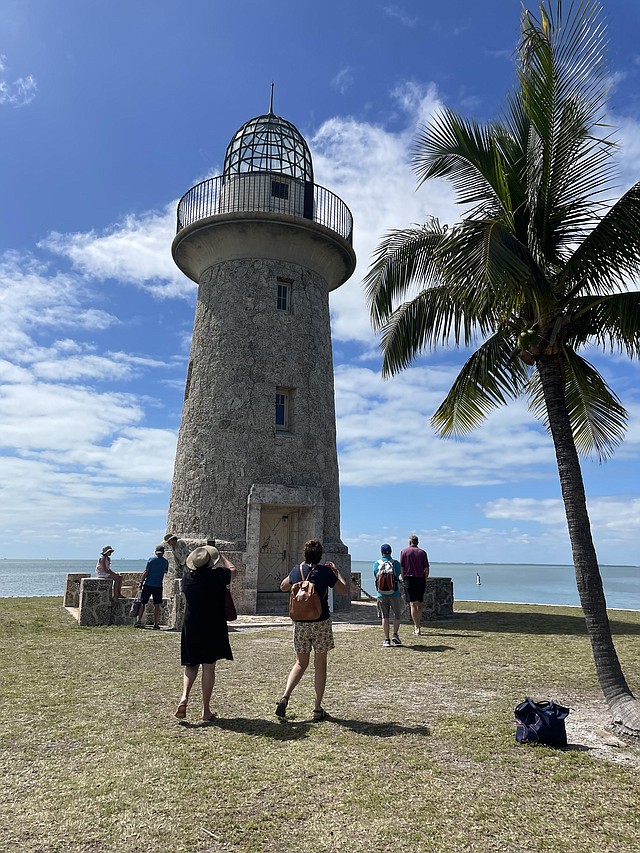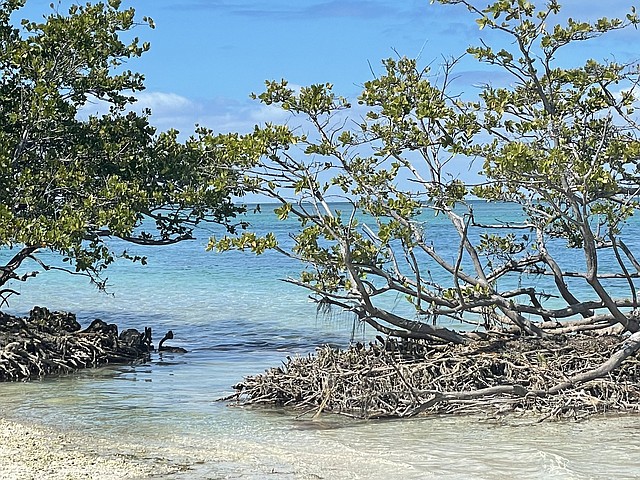Biscayne National Park is not like most national parks, where land is the dominant feature. Here on the southeast edge of the Florida peninsula, water takes centerstage and comprises 95% of the park’s geography. It’s a subtropical playground, comprised of a mangrove shoreline, a warm, shallow bay and small islands or keys.
Established first as a national monument in 1968, Biscayne was later enlarged to its current 173,000 acres and designated a national park in 1980.
The blue-green tinted water in the bay is incredibly clean and crystal clear, and a year-round Caribbean-like climate provides generous sunshine and abundant rainfall. It’s a paradise for marine life, from starfish and sponges to crabs and fish with exotic names like Stoplight Parrotfish, Princess Venus and Peppermint Goby. And it’s a sanctuary for water birds, such as brown pelicans, white ibis, snowy egrets and blue herons.
The bay is a trove of sea treasures and serves as a home for many species, while acting as a temporary waystation and feeding ground for others. And naturally it’s also an outstanding recreation destination for boaters, anglers, snorkelers and divers alike.
One of the more unique creatures that visit the bay in winter is the endangered manatee. This gentle giant, whose closest relative is, believe it or not, the elephant, comes to feed on the seagrasses. These mostly herbivore mammals average over a thousand pounds, with some topping out at a whopping 3,500. They can hold their breath up to twenty minutes, have flat teeth and no eyelids. And one of the more interesting facts about them is that the females help each other during birth, a la midwife fashion.
I spotted several manatees while visiting Biscayne, and their size took my breath away. They’re ginormous, blubbery things of beauty and I found them so entertaining to watch, especially when they did belly rolls.
The best way to explore the park is to get out on the water, and the Biscayne National Park Institute offers several, guided eco-tours you can book online in advance of your visit. There’s everything from sailing and boat cruises with island stops to paddling adventures and snorkeling and scuba trips.
Most of the excursions depart from the Dante Fascell Visitor Center at Convoy Point in Homestead, though a few leave from Miami and Coconut Grove. The Visitor Center has a small museum and gallery. In the museum, there are a number of exhibits and hands-on displays dealing with the park’s ecosystems; while the gallery showcases the work of contemporary artists, who have been inspired by the beauty of the area and wish to call attention to eco issues affecting marine environments.
From the Visitor Center, I took the naturalist led “Paddle the Mangroves and Seagrass Meadows” excursion, as I wanted to get a closer look at this area via kayak. I learned that the park boasts one of the longest contiguous stretches of mangrove shoreline left on the country’s eastern shoreline. The trees provide habitat for birds, tree crabs, the mangrove snake, juvenile fish and various rare species of flora and fauna.
Years ago, mangroves were considered worthless and viewed as “wasteland.” Now, however we know how significant they are to nature, as they provide shelter and food for the underwater life and birds. They also keep the water from being dirtied by land pollutants and serve as a defensive barrier against harsh weather and erosion.
These super trees can be red, black or white in color and are unique in appearance. The roots of the red ones are pole-like, climbing out of the water, and those of the black ones make me think of cigar sticks that are stuck in the mud. White mangroves get their name from the salt deposits expelled from their leaves.
Navigating our kayaks through the watery trails amid the mangroves was sometimes challenging, as the passageways were very narrow and it was easy to get tangled up among the gnarled roots and branches. The forest looked impenetrable and dark and it was hard to see any sign of life, though I did spy an iguana on a branch, hidden in camouflage fashion. A veil of mystery hung over the area, giving it a bit of a spooky aura.
After exploring the mangroves, we were given time to paddle around the bay on our own, taking in the scenery and enjoying the ability to move freely, without being constrained by the mangroves’ knotty maze.
On another day, I opted to join the “Boca Chita Key and Biscayne Bay” boat cruise. The excursion left from Deering Estate, the 1920s winter residence of Charles Deering, and now a cultural asset, listed on the National Register of Historic Places. Deering, who was the first chairman of International Harvester Company, was a noted Chicago industrialist, philanthropist, environmentalist and art collector. One of the main reasons he bought the home and subsequently built another on the site, was to showcase his valuable art collection.
Before or after the boat tour, you can do a self-guided tour of the homes. Inside are some items of Deering’s original collection, though most were donated to the Art Institute of Chicago and Northwestern University. Other antique objects you see are representative of the style and era. It’s obvious why Deering chose this special place, as the views of the bay are stunning and the setting, serene.
It was a lovely day for a boat ride and on the way to Boca Chita Key, our naturalist guide shared with us some information about the Deering Estate, Biscayne Bay and Boca Chita. This key is the most accessible island in the park, as it is the closest to the city of Miami.
Mark Honeywell, an Indiana man, who founded Honeywell Incorporated and was its CEO, owned Boca Chita from 1937-45. He built many of the structures on the island, including the “Chapel,” the lighthouse, pump house and picnic tables. The lighthouse, which stands 65 feet tall, is made of coral rock and was created to be a landmark for Honeywell’s captain as he navigated in and out of the area.
Honeywell was the president of the Committee of 100, a group of affluent investors and industrialists in the country. The group would gather to discuss pertinent issues of the times and once a year, the members would have its annual party on Boca Chita. It was always an extravagant affair with a canon fired off to welcome the prestigious guests.
After Honeywell’s wife passed away, he sold Boca Chita. Today, it is owned and operated by the National Park Service and anyone can visit the place by boat, and even camp there. The lighthouse is open when park rangers are present. Climb to the observation tower at the top for a picture-perfect view of the area and hike the trail around this Robinson Crusoe-like island.
